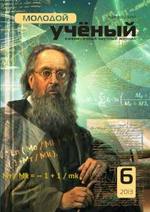В статье рассматривается использование метода “Ранг” на анализах семантической продуктивности генетически не связанных лексических омонимов на английском и узбекском языках.
This article is considered method “Rang” which used on analyzing of semantical productivity of genetic non-related homonyms in English and Uzbek languages
Key words: the Uzbek language, homonymic lines, semantical productivity, criteria, phraseological productivity, genetic non-related homonyms.
Homonymy is one of the multifunctional and problematic aspects of modern lexicology, pragmalinguistics, and semasiology. Homonymy is associated with historical and evolutional changes in semantical structure of a word.
Semantical alterations are basied on linguistic (connected with internal development of language) and extralinguistic (conditioned with history, culture and so on) factors. Genetically non related homonyms can be when the first, second and other meanings of homonym rows etymologically refer to different languages. Semantic productivity of none genetically related homonyms are when it has one form and more than one meaning. In this case the attention is given to the amount of expressed meanings.
Relationship between homonyms, their position in the language, linguistic and extralinguistic factors exist in their productivity. The word “samaradorlik” is an alternative of the term “productivity” while etymologically it came from Latin word “productivious” which means to produce something or useful to produce something.
Semantical productivity of a word is characterized as the amount of lexical-semantic variation of that word in some researches. Professor O. M. Mominov states that semantic activeness of a word is a feature which defines whether the word has more or few meaning. Moreover, it is one of the criteria which determine how active the word is. The scholar has analyzed the concept semantic productivity thoroughly. He started the frequency of word usage in speech, its grammar features, and the potential of its meaning. Additionally, he included different parameters like productivity level of forming word-building and phrase logical units. Consequently, we will try to take his viewpoints into account in our research.
We should point out that activeness criteria can be referred to only synchronous aspect investigations not to diachronic aspect data. The criterion of productivity in diachronic aspect researches should be steadiness (regularity) not activeness. Presently, we can observe the language development, the active and passive word-building; therefore, one should take the criterion of activeness into consideration.
Semantic productivity of non genetically related lexical homonyms in English and Uzbek has been analyzed on parameters as pure semantics, tropic, terminology and stylistics. Based on this analysis result we can acknowledge that the productivity level varies. This is concerned with internal and external circumstances:
- Assimilation level of non genetically related lexical homonyms in two language vocabulary;
- The usage level of non genetically related lexical homonyms in oral speech, that is, their activeness or passive usage;
- The affect of linguistic and non linguistic factors on non-genetically related lexical homonyms;
- Dictionary (lexicography) making level, that is, the organization of dictionary articles which shows semantic productivity of non-genetically related lexical homonyms, and their level of semantic occupation.(whether all their meaning have been included)
There are no definite criteria to find various levels of word productivity in modern linguistics. In our research we shall use stylistic method done by O. M. Mominov. First we will appoint “color” to each word.
Concept of semantic productivity is a new term used lately in linguistics. This method has been clearly analyzed in the article “Semantic productivity of a word in Modern English “ by D. B. Abdurahimov. So it is quite important in our research.
We will call the numbers of words from above to bottom on the list “colors “based on amount character of productivity. (1, 2, 3…)
Words which have the same numbers will be given average arithmetic order. If non-genetically related words are numbered 52, 31, 31, 29, 23, 23 according to their phraseological productivity, they will have the following colors (that is, their number): 1, 2.5, 2.5, 5.5 and so on. When we make the colors line, we define the limit of high, middle and low productivity.
Here productivity levels boundaries are found with the help of the following formula.
I XMAX_-_X_MIN
II
Here “I” is a space between groups, “X max”, is a maximum limit of the productivity of a lexical unit, “X min” is a minimum limit, “II” is a number of phrase logic productivity of non-genetically related lexical homonyms is 241–1. Here 247 is a maximum colors and minimum colors is 1. To find non genetically related lexical homonyms which have high, middle and low productivity we have to find the difference between maximum and minimum colors. For instance, it is 246 (247–1) for word-building productivity. We divide this difference into 3 and the interval among the groups will identify their boundary.
The above mentioned criteria have been applied to our dissertation while analyzing the semantic productivity of non-genetic lexical homonyms, summarizing the achieved results in tables and diagrams.
So, the role of the “Rang” method in analyzing the productivity of non genetically related homonyms in different aspects are immense and very important.
Литература:
1. Muminov A. М. “Lexicology Of The English Language”. Мехридарё. Т., 2008. — 161 с.
2. Муминов А. М. Влияние источника заимствования на семантическую и словобразовательную активность английского глагола в разные исторические периоды языка. Владивосток. 1980. с. 58.







